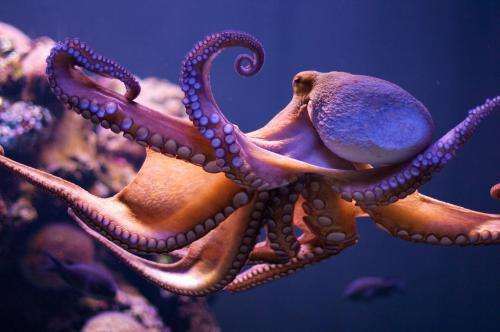New ageing method boosts octopus research

Scientists are using weight to determine the age of wild octopuses, enabling an understanding of the impact of fishing and revealing WA's octopus population is in very good health.
Until now, the lack of an efficient method to age octopuses has hindered progress of octopus population studies.
Stephen C Leporati, formerly of the Department of Fisheries, says the previous method—named Stylet Increment Analysis (SIA)—was effective, although costly and time consuming.
"We cut a small cross-section out of the middle of the stylet [a small cartilage-type structure in the head of the octopus] and placed it under a microscope to see lots of tiny concentric rings, much like those in a tree," says Mr Leporati.
"Each ring represents a day in the life of the octopus, and by counting all the lines you get an idea of how old the octopus was."
In this study, the team first confirmed that stylets grow in daily increments, using calcine injections to visibly mark the stylets of captive octopi.
They then used SIA to count stylet increments in 251 wild-caught Octopus (cf) tetricus, weighing these stylets to discover a strong correlation between the number of stylet increments and stylet weight.
"This trend enabled us to weigh the stylets as a means of ageing the octopus, vastly expanding the prospective sample size and opening up the possibility of ageing octopus populations more accurately and comprehensively than was previously possible," says Mr Leporati.
The team went on to estimate the age of 3280 octopi, only by weighing their stylets.
They found age was proportional to stylet weight for both males and females, with maximum ages for males and females being 677 days and 542 days respectively.
Octopus catch rates spike
The study was part of a larger Fisheries Research and Development Corporation (FRDC) project designed to investigate the spike in octopus catch rates.
"The primary goal of the overarching project was to determine sustainable harvest rates for the developmental octopus fishery," says Mr Leporati.
"The ageing study was an integral component of this, so we could understand the influence different rates of fishing pressure may have on the population."
The new method allowed scientists to age thousands of octopi over just two years, helping to assess the state of the octopus population in WA.
"The overall conclusion from the project was that current fishing pressure is not having a major impact and the WA octopus population is in very good health."
Provided by Science Network WA





















